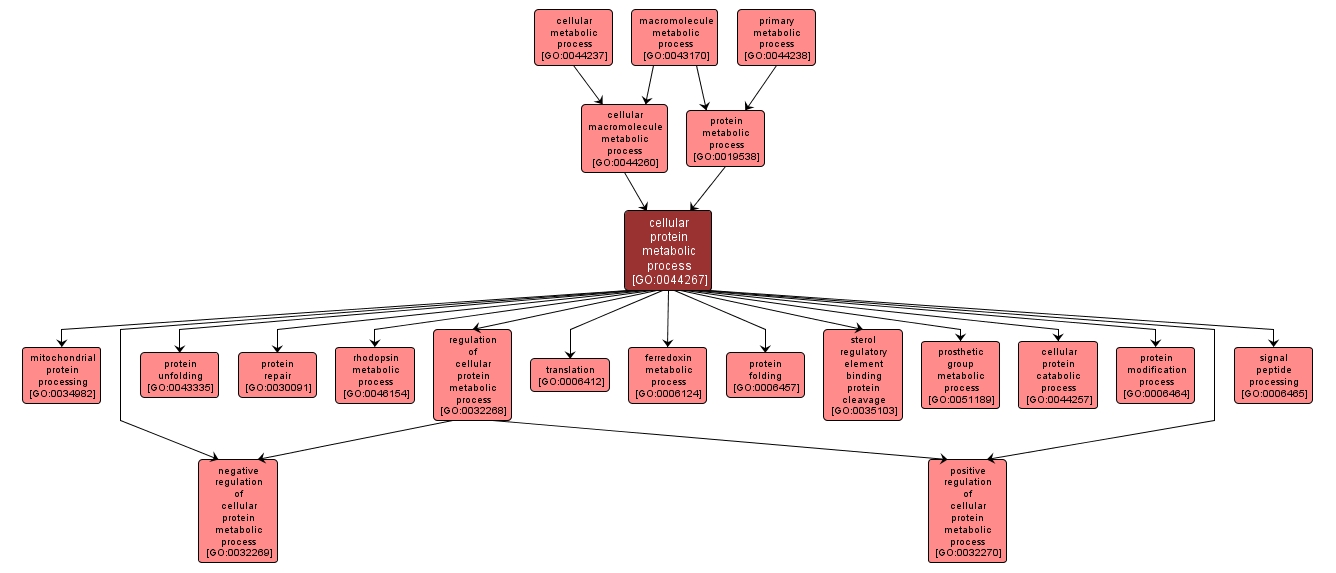GO TERM SUMMARY
|
| Name: |
cellular protein metabolic process |
| Acc: |
GO:0044267 |
| Aspect: |
Biological Process |
| Desc: |
The chemical reactions and pathways involving a specific protein, rather than of proteins in general, occurring at the level of an individual cell. Includes protein modification. |
Synonyms:
- cellular protein metabolism
|
|

|
INTERACTIVE GO GRAPH
|














